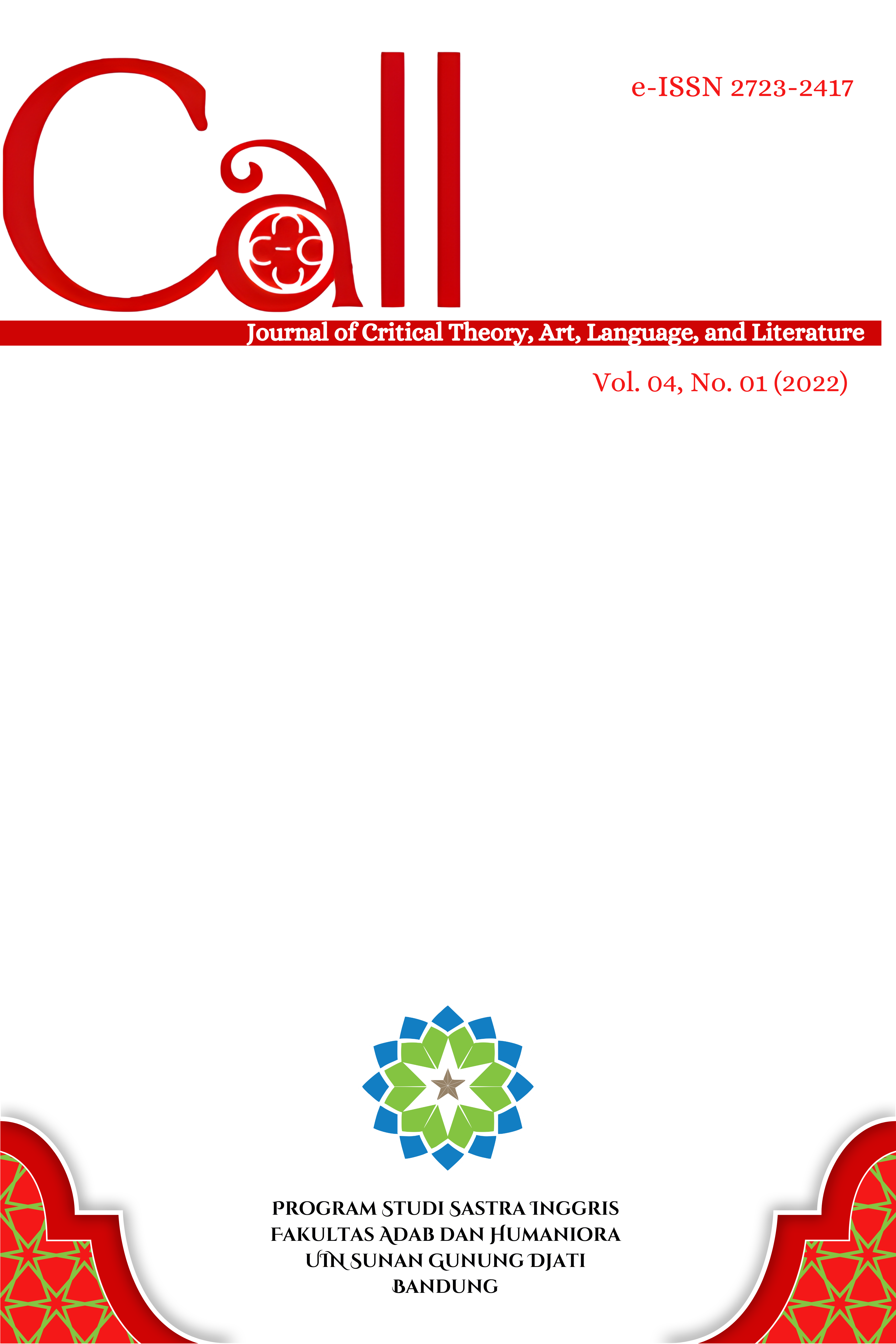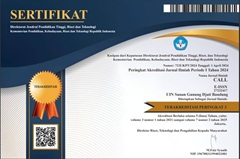Semiotic Signs in Avengers Endgame Movie
DOI:
https://doi.org/10.15575/call.v4i1.15160Abstract
This study examined the hostile cues in the Avengers: Endgame film. The semiotic theory of Charles Sanders Peirce is used in the debate. It focused on two problem formulations: the type of semiotic sign by highlighting the hostile sign present in the film, and the sign's meaning. Aims of this study was to identify the various hostile semiotic cues present in the film as well as how a film communicates a message that can be applied to daily life. Then, it has significant ideals that can inspire and make reference to societal reality. The study examines a variety of materials, including interview transcripts, social science texts, and narrative-style films, television shows, and periodicals. It does this using a qualitative research methodology called content analysis. In order to be interpreted afterwards, hostile cues from the actors are gathered and grouped. The findings demonstrate that when the Avengers are prepared to make sacrifices in order to battle and defend the universe in order to defeat evil, indicators of animosity are visible.
Â
Keywords: semiotics, sign, meaning, hostility, movie
References
Afisi, O. T. (2020). THE CONCEPT OF SEMIOTICS IN CHARLES SANDERS PEIRCE’S PRAGMATISM. In Trends In Semantics and Pragmatics.
Boggs, J. M., & Petrie, D. W. (2008). The Art of Watching Films. McGraw-Hill Education.
Buss, A. H., & Perry, M. (1992). The Aggression Questionnaire. Journal of Personality and Social Psychology, 63(3), 452–459.
Eco, U. (1979). A Theory of Semiotics. Indiana University Press.
Guyll, M., & Madon, S. (2003). Effects of Trait Hostility and Self-Relevance on Social Information Processing. PERGAMON Personality and Individual Differences, 34, 681–693.
Klarer, M. (1999). An Introduction to Literary Studies. Routledge.
Lasswell, H. (1927). Propaganda Techniques in the World War. Knopf.
Macnamara, J. (2005). Media Content Analysis: Its Uses, Benefits and Best Practice Methodology. Asia Pacific Public Relations Journal, 6(1), 1–34.
Nöth, W. (1995). Handbook of Semiotics. Indiana University Press.
Peirce, C. S. (1902). Logic as Semiotic: The Theory of Signs. In Philosophical Writings. Dover Publications.
Prior, P. (2014). Semiotics. In C. Leung & Brian V Street (Eds.), The Routledge Companion to English Studies. Routledge.
Russo, A., & Russo, J. (2019). Avengers: Endgame. Walt Disney Studios Motion Pictures.
Smith, T. W. (1992). Hostility and health: Current status of a psychosomatic hypothesis. Health Psychology, 11(3), 139–150.
Downloads
Additional Files
Published
Issue
Section
Citation Check
License
Authors who publish in CALL agree to the following terms:
- Authors retain copyright and grant the journal right of first publication with the work simultaneously licensed under Attribution-ShareAlike 4.0 International (CC BY-SA 4.0) License that allows others to share the work with an acknowledgment of the work's authorship and initial publication in this journal.
- Authors are able to enter into separate, additional contractual arrangements for the non-exclusive distribution of the journal's published version of the work (e.g., post it to an institutional repository or publish it in a book), with an acknowledgment of its initial publication in this journal.
- Authors are permitted and encouraged to post their work online (e.g., in institutional repositories or on their website) prior to and during the submission process, as it can lead to productive exchanges, as well as earlier and greater citation of published work (See The Effect of Open Access).




